
by Adam L Stanley | Sep 11, 2016 | Life, Quotes and Inspiration, Relationships
Never Forget
September 11 – Fifteen Years Later

Adam Stanley – 2001
Many of you have read my stories from the Morning and Afternoon of the awful nightmare that was September 11, 2001. It took two years for me to be able to share my morning story broadly, and several more years to talk about the rest of the story.
I will never forget the tragedy. But I will also never forget the way we rallied together. On this 15th anniversary, I choose to remember it all. The horror and the light that emerged from the darkness.
I remember the friend of a friend of a friend who opened her house to me that night. The four strangers that shared a rental van with me so we could find a train or plane to wherever.
I remember the massive headache I had until I was finally out of the city, literally crossing the border into the city of Chicago in that Philadelphia procured rental van with four strangers. And sharing hugs with my partner, my family, and my friends in Chicago. The joy and love I felt when I was finally able to listen to my voicemails, check email, and see so many people that cared.
I remember the heartache on September 22, when I first returned to New York and tried to start working again. It’s hard to describe but feeling a mixture of relief you could just move on, sadness so many people would never return to their desks, and a bit of melancholy thinking of how little what you were doing actually meant in the grand scheme of things.
I remember the wretched sickness of the smell of burnt steel, and human decay. Walking back to the building so close to Ground Zero. Going up to the cafeteria where I first saw the tower burning and seeing a vast emptiness where once two great towers stood. To my office where the CFO and I had stood watching the events unfold, in anger and tears.
I remember the concerts, the signs, the flowers everywhere, the photos of missing loved ones. I cry thinking of the faces of those who did not know for sure for weeks. Some still do not have any remains to bury.
I remember the names. Oh God the names. That was, and remains, the most difficult part for me. It has been 15 years and I still cannot say for sure that I did not know someone else that perished that day. So many people died. Who amongst the long list was an ex-lover, a former coworker, a grade school friend? Who had sat next to me on the plane the previous day? Was one of the flight attendants someone that greeted me with a smile on one of my countless flights around the country? Someone I stood in line with at Barneys New York nearby, or one of the coffee trucks.
I remember the news. Constant, unending reminders of what happened. Pundits from all over the country, many of whom were nowhere near Ground Zero, pontificating about what happened. Troops being deployed by a Pentagon still mourning the loss of so many of their own. Stories of the heroes and photos of the perpetrators. I remember shutting it all out as much as I could.
I remember the different views of my friends and colleagues. Some of us walked through or were in the building when the tragedy started. Others were merely blocks away. Some worked in midtown but lived near the World Trade Center. Some were out of town when it happened. Others had never even been to New York but were fellow Americans. Many people had a story simply because wherever they were in the world, their hearts were horrified by what had happened.
It was hard for me to talk to anyone for a while after that day. My story was different than their story. And in many ways that made it hard to comfort each other. I could no more comfort someone who personally saw someone falling from one of the towers than I could be comforted by someone who only watched the horror on television. But there was hope and their was a spirit of resilience. There was a sense that we would overcome what happened and be stronger as a nation and as a people.
The media will lead you to believe we have lost all of that. That we have become more divided now than we were then. I do not believe that. I remain full of hope that we can rise above hatred, bigotry and all forms of evil. By the grace of God, we can be better and live better. We can love.
My Ask
My ask is simple. Do not use this 15th anniversary of that terrible day as a means to justify hatred, elect a political leader, or prove just how much more patriotic you are than the next person. Use it to show love. However you know how. “Never Forget” the lives that were lost. But also never forget those that were saved and those that saved. Never forget those who called you that day just to say hello and tell you they loved you. Never forget the renewed sense of optimism you had and the determination to rebuild and prove that we were not defeated. Never forget the people of many races, socioeconomic backgrounds, and religions that rallied together to help those in need.
Never forget that in a moment of pure terror, there was light somewhere near you.
Bring that light back. And the bad guys will never win.
Be well. Lead On.
Adam
Related Posts:
Remembering 9/11 – 15 years later (2016)
Remembering 9/11/01 – My Morning in Lower Manhattan (2011)
Remembering the kindness of strangers – September 11 (2014)
Retracing My Steps (2017)

Adam Stanley – 2016
Adam L. Stanley Connections Blog
Technology. Leadership. Food. Life.
AdamLStanley.com
Follow me on Twitter | Connect with me on Linked In | “Like” me on Facebook
by Adam L Stanley | Jun 10, 2016 | Leadership, Relationships, Teamwork
I started to make this blog post one of my #SoapBox rants. It is in fact a topic about which I am passionate. Largely because I have seen really bad behaviors and would love to do my part to get rid of them. I’ve blogged about Trust, Empowerment, and Accountability, but never really dug deep into accountability. While I think many organizations are starting to do a really good job at defining expectations and holding people accountable, it is still too often the manager that is calling the tasks and managing the tough conversations. A few people have really argued that peers can play as active a role in this and they should. And I agree. So this post is about holding each other accountable, across silos and organizational hierarchies.
————————–
There is a dirty little secret in many organizations that teams oftentimes don’t want to collaborate, driven perhaps by the idea that while we do a lot of our work in teams, we still promote individuals. If you follow the two-pizza rule and assume most teams are 8-10 members dispatched to work on a business need, in a given fiscal year probably 1-2 of those people (at most) will get advanced. If you’re in the 7-9 who don’t get advanced and that keeps happening, you might eventually become a bit disgruntled about the idea of constant team-building.

Here’s the other problem with teams besides the motivation aspect: how they’re run. Oftentimes, teams are very driven by process — which is a good thing, as it sets rules and expectations for how the work will get done — but there’s a large concern over who owns the process, i.e. the team lead. This is also good in one respect (accountability), but bad in another — and ironically, it’s also accountability.
I saw this recently in an organization. One of the leaders designed a portfolio dashboard for project management in his group. It was pretty awesome — there was easy-to-access, intuitive information about timelines, budgets, due dates, and roles. Here was the problem: the tool was created by someone not responsible for creating that tool based on the operating model and org structure (it should have been the PMO). Because the team wasn’t getting what they wanted from the PMO, they did an end-run and created a better solution. Of course, this type of action can lead to a decent amount of politics and finger-pointing over responsibility, as opposed to a focus on being the most productive we could be.
Sadly in many cases, the way we structure teams is typically representative of the way we structure whole organizations. Hierarchy defines decision-making authority in the most formal sense. Since hierarchy may never die — despite what we’ve been told about millennials — we should, in a way, get used to this.
Think for a second about how ineffective this can be. You’ve probably seen this cycle a dozen or more times in different jobs you’ve had, but here it goes: an employee escalates an issue to a team manager, who then must go and talk to a peer manager. The peer manager has to go talk to the employee, who presents his/her perspective to the peer manager — who now has to go back to the team manager and explain the perspective. The team manager can now go to the employee. It’s like a massive version of reply all chain threads, but in real life and not in your inbox. It kills time and saps productivity, and yet, that’s typically how we deal with team management and issue escalation.
Escalations and circles of perceived accountability should be the exception and not the rule. I think of my work this way: 95% of real change comes from the direct reports of my direct reports. They do the actual work. I should be focusing on strategy and growth. If I’m spending all my time quashing escalations, we’re all in a free fall.
There’s a potentially better way to run teams, though: universal accountability.
The basic principle is simple, but very hard to execute: anyone on a team can hold anyone else accountable if it’s in the best interest of the team. And yes, that means you can cross hierarchical lines and call out someone that outranks you.
 In a post on the Harvard Business Review blog, “The Best Teams Hold Themselves Accountable”, Joseph Grenny summarized a theory based around this series of logic:
In a post on the Harvard Business Review blog, “The Best Teams Hold Themselves Accountable”, Joseph Grenny summarized a theory based around this series of logic:
- In the weakest teams, there is absolutely no accountability: You’ve probably seen this a few times wherever you work, or in previous jobs.
- In mediocre, middle-of-the-road teams, the boss/team lead is the source of accountability: This team might get a few things done, which is good, but there’s a tendency towards HIPPO Management (highest paid person’s opinion) and other flaws of ideation.
- In high-performing teams, peers manage each other: This is hard to arrive at because of how people tend to contextualize bosses and hierarchy, but actually drives the best results.
How can you apply this to your team?
Focus on team composition a lot more
You need to think a little more thoroughly about team composition. Oftentimes teams are thrown together based on a few silos that have ownership of a product or service or project. There can often not be much thought given to who’s involved and what role they’d play. As a result, you have a random smattering of individuals and a team lead. That team could come together and achieve some great business results, but I wouldn’t necessarily throw $20 on that happening in Vegas. It’s more likely that role confusion will lead to overlapping responsibilities, which will lead to team members chasing their tails, and ultimately the team lead will be on the hook for the flaws.
2. Hire the curious as much as (or more than) you hire the smart
Universal accountability will tend to work better on teams with a high degree of self-awareness and curiosity, as those teams are more willing to embrace changes to conventional team management models. Cass Sunstein, a professor at Harvard Law, has written and spoken extensively about what makes teams smart or dumb — and while he embraces universal accountability, he admits the bigger driving force of a successful team is ‘C-Factor,’ or the ability to embrace new ideas while working together. Hire people that are comfortable with change and ambiguity as long as they are learning. Hire the curious.
3. Reward problem solving without escalation
Perhaps as importantly, publicly scorn premature or unnecessary escalations. When I was a kid, my parents often told me “everyone hates a tattletale”. Of course, they did not mean to say I should never tell them if something awful happened to me. They simply wanted me to learn to self-heal and self-resolve conflicts as much as possible. Little did I know then they were teaching me a life lesson. The more you can solve problems direct with the source, the more effective you will be. Celebrate the problem solvers.
4. Model the behavior
You likely have issues with your peers as well, and your frustration is very visible to your teams. Show them you hold your peers accountable and they are more likely to model this behavior with their peers.
In an average day, you will only have so many productive hours outside of meetings and required client events, so you need to make the most of them. Every hour spent dealing with someone else’s drama or problems is an hour you could be driving value. Try to build a culture of universal accountability and see how much more you can get done.
Ever been on a team where Universal accountability was the norm? Could it work in YOUR organization? As always, I would love to hear your thoughts.
Be well. Lead On.
Adam
Related Posts:
Defining the Perfect Employee – Top Traits Series
Trait 1: Hard working AND talented
Trait 2: Pride in work product
Trait 3: Fun to work with
Investing in talent for the long-term

Adam L. Stanley Connections Blog
Technology. Leadership. Food. Life.
AdamLStanley.com
Follow me on Twitter | Connect with me on Linked In | “Like” me on Facebook
by Adam L Stanley | Feb 2, 2016 | Leadership, Relationships, Teamwork
Allies on a tour of duty.

LinkedIn CEO Reid Hoffman and fellow entrepreneur Ben Casnocha wrote a book called The Alliance in which they argue that investing in your employees is good for both parties in the relationship. I could not agree more and have strived to live this principle throughout most of my career. Sadly, I have not seen consistency in the level of personal support for me. I suspect that many managers still do not consider it a critical endeavor to invest in talent beyond “today.”
Hoffman and Casnocha actually refer to providing opportunities for development as an obligation. Their suggestion for solving the problem employers face with wanting high output from employees who do not have a guaranteed long-term company commitment? Stop thinking of employees as family or free agents, and start thinking of them as allies on a tour of duty. LOVE IT!
Those who have worked with me the past several years tend to hear certain things over and over again. I hope they don’t get annoyed with repetition but I truly, truly, truly feel that talent is not everything: It is the only thing. Therefore, it is key to effectively empower employees to do their jobs, trust one another to be honest and upfront about success and failure, and to hold people accountable. These are the best ways to build a respectful organization that drives value. The Alliance framework reminds us that, even with the best intentions, companies must make changes. For instance, in each of my last three companies, we have had significant reductions in force that were not driven by weak talent as much as they were by financial constraints.
In environments of rapid change, employees must feel that there is benefit to their hard work. That there is benefit to the sometimes long hours. That the uncertainty and the added challenges that come with events like acquisitions and divestitures, when appropriately focused, can be tremendous improvements to their resume, their experience, and ultimately their futures.
Ok, so this is one of my favorite slideshares. Hope you get it as well.
Talent Matters!
Click here for the slide show – The Alliance: A Visual Summary from Reid Hoffman
What do you think?
Do you agree with the concept of a joint partnership on a tour of duty? Do you feel, as Hoffman and Casnocha, that it is critical to train and develop an employee, regardless of whether the training is good for your organization today or simply for the employee’s long-term value? As always, I would love to hear your thoughts.
Be well. Lead On.
Adam
Related Posts:
Who Am I?
Expectations of Leaders at all Levels
Khalil Gibran on Leadership
Lessons from Henry V

Adam Stanley
Adam L. Stanley Connections Blog
Technology. Leadership. Food. Life.
AdamLStanley.com
Follow me on Twitter | Connect with me on Linked In | “Like me on Facebook
by Adam L Stanley | Oct 14, 2015 | Leadership, Relationships, Teamwork
How do you describe yourself to new colleagues?
 Perhaps the most common thing I heard during the first few weeks after my firm joined forces with another firm was this seemingly simple yet incredibly important statement: “I don’t know Adam’s style yet.†That can’t really be rectified with an email, or a blog, and frankly most teams will just have to get to know their new boss as a matter of course. That said, I was curious to know how many people are asked this question and how do you answer it.
Perhaps the most common thing I heard during the first few weeks after my firm joined forces with another firm was this seemingly simple yet incredibly important statement: “I don’t know Adam’s style yet.†That can’t really be rectified with an email, or a blog, and frankly most teams will just have to get to know their new boss as a matter of course. That said, I was curious to know how many people are asked this question and how do you answer it.
Do you talk about your personal life and what matters outside of work to allow them a glimpse of who you are? Do you talk about your operating principles, your values?
I will suggest there are a few things that make me who I am and I am happy to share these things. But I’m not sure if this actually answers the question.
Who am I?
1) I am passionate about diversity in all aspects of the word. Born and raised in Chicago, I have lived in St Louis, New York, Philadelphia, London and Johannesburg for periods of time and have become who I am from a bit of each of those experiences, plus my travel to over 40 countries. Being “global†is to me the greatest way to leverage and learn from different backgrounds, experiences, and perspectives. Anything that prevents truly gaining this leverage is a problem. In this way, I am a bit stubborn (cue the next bullet)
2) While on the cusp, I am primarily an extrovert in that I get lots of my energy from others. On the Myers Briggs scale, I am an ESTJ (“Executiveâ€) with all the positive and negatives of that personality type. (I do, however, feel that I am an ISFJ in my personal life and as I get closer to a team, I start to lean a bit more in that direction.) I love building and managing teams, organizing them for success, and moving on to the next initiative or program. When I have gotten myself to a certain model, I do struggle at times changing my mind. Yes, I can be stubborn. You can ask my partner or other family members!
3) I believe that leaders emerge from all levels of an organization and have personally seen relatively junior colleagues rise through the ranks with a little nudge and lots of support. Nothing excites me more than witnessing this, even when it means someone that has developed with me outgrows the nest and must go elsewhere. I want to be a part of this journey for colleagues in my current team.
So, how does this work? If you are unable to work with me for several months, to truly get to know my style and values, would these three items give you a clear enough sense of who I am? How would you describe yourself to a new team? As importantly, what would you want to hear from your new boss?
Be well. Lead On.
Adam
Related Posts:
Expectations of Senior Leaders
Expectations of Leaders at all Levels
Khalil Gibran on Leadership
Lessons from Henry V

Adam Stanley
Adam L. Stanley Connections Blog
Technology. Leadership. Food. Life.
AdamLStanley.com
Follow me on Twitter | Connect with me on Linked In | “Like†me on Facebook
by Adam L Stanley | Jun 19, 2015 | Technology
My interview on Technological Innovations and CRE
Realcomm/IBcon 2015 Conference in San Antonio, TX
In the interview, I discuss the rapid pace of technological changes in commercial real estate; the use of virtual reality for viewing property; DTZ’s use of analytics to help clients make smarter decisions; as well as the future potential for drones and the Internet of Things. I am NOT a corporate IT leader, which is why I prefer calling myself a Technology Evangelist. While I am proud of the great work we do strengthening the foundation elements that make our business more effective, first and foremost I work for our clients and focus on how we can bring innovation to them. Technology truly is changing, rather disrupting, our industry. It is both fun and frightening to watch how fast it is happening but I am glad to be a part of it.
Other related blog posts:
“Thinking Like Our Ancestors”
Excerpt: At the end of the day, perhaps disruption is a lot more simple than we make it seem at these mega conferences like OpenWorld. Perhaps disruption is simply a relentless focus on consumers: your clients, employees and investors. Dream every night of how you can better meet their needs and there is no way you can NOT disrupt your industry. Perhaps the only way you will get left behind is if you leave your consumers behind. Perhaps disruption is simply about a return to the past.
Facebook, Snapchat, and the new new thing
The bottom line is I don’t necessarily believe the Facebook is in its final days. I do believe, however, the company must drastically rethink their strategy and consider alternatives for growth in the United States. If they truly believe that growth in other markets will counter dramatic drops in USA, I believe that is misguided. Other markets will eventually follow the same path of the United States. Younger users will leave; older users will join the platform at a much lower level of engagement; upstarts will create the next next big thing and advertisers will be tempted away.
Be Well. Lead On.
Adam

Adam L. Stanley Connections Blog
Technology. Leadership. Food. Life.
AdamLStanley.com
Follow me on Twitter | Connect with me on Linked In | “Like me on Facebook

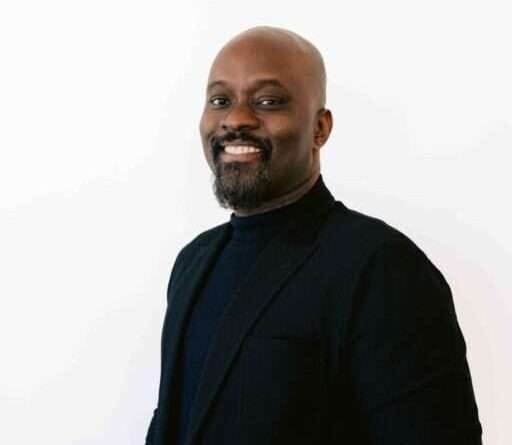
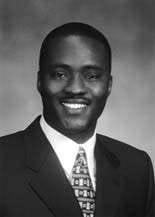
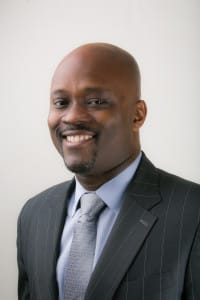

 In a post on the Harvard Business Review blog, “
In a post on the Harvard Business Review blog, “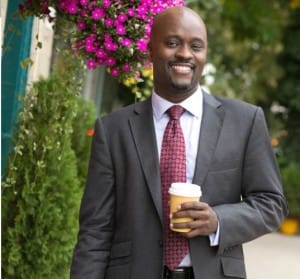

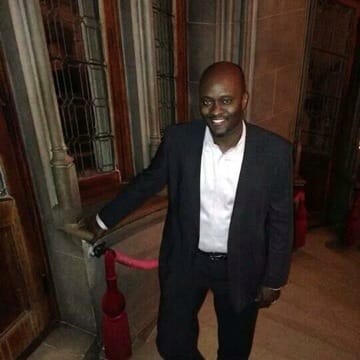
 Perhaps the most common thing I heard during the first few weeks after my firm joined forces with another firm was this seemingly simple yet incredibly important statement: “I don’t know Adam’s style yet.†That can’t really be rectified with an email, or a blog, and frankly most teams will just have to get to know their new boss as a matter of course. That said, I was curious to know how many people are asked this question and how do you answer it.
Perhaps the most common thing I heard during the first few weeks after my firm joined forces with another firm was this seemingly simple yet incredibly important statement: “I don’t know Adam’s style yet.†That can’t really be rectified with an email, or a blog, and frankly most teams will just have to get to know their new boss as a matter of course. That said, I was curious to know how many people are asked this question and how do you answer it.
